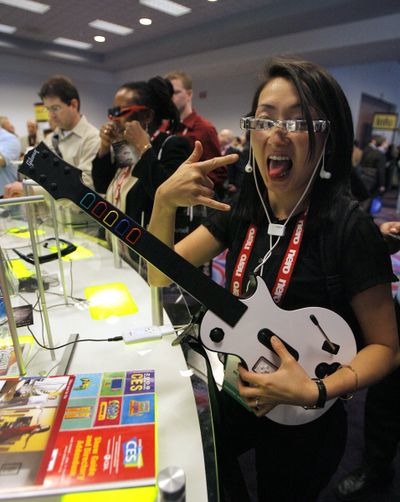Generation gamer
Nearly all young Americans play video games, survey finds

CHICAGO – A new national survey from the Pew Internet & American Life Project illustrates just how ingrained video games have become in youth culture: It found that while young Americans don’t necessarily play the same thing, nearly all of them play video games of one kind or another.
And they don’t just play by themselves. Nearly two-thirds play video games to socialize face-to-face with friends and family, while just over a quarter said they play with Internet friends.
“It shows that gamers are social people,” says Amanda Lenhart, a senior researcher at Pew who led the report on the survey. “They communicate just as much. They spend time face-to-face, just as much as other kids. They e-mail and text.”
The survey, released Tuesday, combined the telephone responses from a nationally representative sample of 1,102 young people, ages 12 to 17, and their parents. Performed from November 2007 through February of this year, and partly funded by the MacArthur Foundation, it had a margin of error of three percentage points.
Among other things, the survey found that:
•Ninety-seven percent of young respondents play video games. That’s 99 percent of boys and 94 percent of girls, with little difference in the percentages among various racial and ethnic groups and incomes. In fact, 7 percent of those surveyed said they didn’t have a computer at home, but did have a game console, such as Sony Corp.’s PlayStation, Microsoft Corp.’s Xbox or Nintendo Co.’s Wii.
•They play often. When surveyed, half of the respondents said they had played a video game the previous day.
•Their games of choice are as diverse as their tastes in music or TV. Eighty percent of respondents play five or more different game genres, with racing, puzzles, sports and action the most common. Favorites were “Guitar Hero,” “Halo 3,” “Madden NFL,” solitaire and “Dance Dance Revolution.”
•Young people are routinely able to get their hands on games that are rated “M” (for mature) or “AO” (adults only). Three-quarters of parents who were surveyed said they “always” or “sometimes” check the ratings on their kids’ games. And yet, half of boys who were questioned listed a game with an “M” or “AO” rating as one of their favorites, compared with 14 percent of girls.
Regardless, Pew researchers said they want to steer clear of depicting video games as “good” or “bad,” says Joseph Kahne, a study co-author and dean of the education school at Mills College in California.
He noted, for instance, that even games with violent content, such as “Halo,” provided “more than average opportunities for players to help one another.”
Kahne also looked at games’ effect on civic engagement, anything from political involvement to raising money for charity. He found that those who spent the most time playing video games weren’t any less likely to be involved in their communities.
The survey did, however, find that those who played games in face-to-face social settings were more likely to say they were committed to civic participation.
Mimi Ito, an anthropologist who studies the use of new media, said more research is needed to explain this phenomenon. But she speculates the ties that gamers make with “real-life local friends” stimulate civic engagement.
“Gaming is the reason to get together – but they’re probably talking about other things,” says Ito, who’s based at the University of Southern California’s Annenberg Center of Communication.
For this and other reasons, Ito cautioned parents against negative stereotypes about video games.